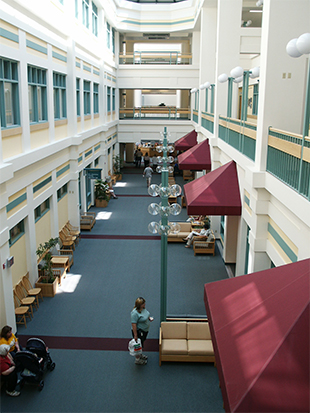Abstract
Since 1885, the hospital has evolved from a public charity to a scientific paragon. A growing chorus of criticism, though, attacks its impersonality and inhospitality, especially in the emerging competitive health market which emphasizes ambulatory care. Hospital administrators have responded by asking designers to re-create the hospital into a more welcoming and accessible place.
A popular method of achieving comfort and familiarity has been to adapt elements of the shopping mall to the hospital and even to consider merging mall and hospital. This adaptation raises important concerns about the evolution of attitudes toward illness and death, private and public spaces, and the mall as a modern design standard. This article highlights one unusual implication, the possibility that the mall, viewed as a reason for the diminishment of public space, might be a means of opening to the public one of society’s most closed institutions — the hospital.
